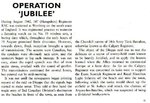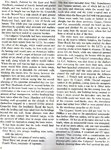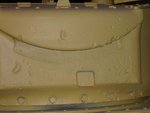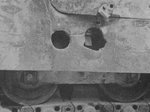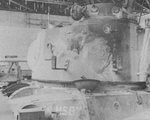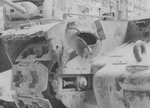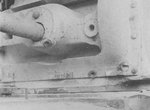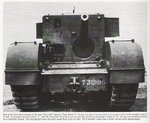- Thread starter
- #41
CharlesBronson
Senior Master Sergeant
Great thread, Charles, could be as interesting as the one about the Panther you did.
It could, it could, thank you.
Churchill Flamethrower OKE
The Churchill OKE was a early form of flamethrowing tank developed in 1942. Three Oke's went on Dieppe raid in August 1942 but all were destroyed before they could use their flame projectors.
The OKE flamethrowing tank was named after its designer, Major J.M. OKE, who has submitted his ideas towards the end of 1941. The design was basically for a Churchill tank fitted with the Ronson flamethrowing equipment, which had already been fitted successfully to carriers. A cilindrical tank containing the flame fuel was fitted at the rear, with a pipe from it leading along the left hand site of the hull, passing under the tracks by the air intake, and emerging between the front horns. There it was connected to a Ronson flame projector mounted in fixed elevation.
This design satisfied the General Staff specification that flame throwers should be mounted only on Infantry Tanks, and that theyshould be capable of installation in unmodified production tanks. The flamethrower's range was 40 or 60 yards.
The rear fuel tank was originally unarmoured, but by the time of the Dieppe raid it had been covered by a large armoured box. Both Peter Chamberlain, in an article in Airfix Magazine in September 1967, and John Reed, in the same magazine in October 1981, state that the equipment was jettisonable. While this may have been so in the OKE's original form, the addition of an armoured box would seem to make jettison impossible.
Three Churchills were converted by Lagonda Ltd. to take the OKEequipment: T32049, T68875, and T31862.
The first two were MK-II's built by Newton Chambers and Beyer Peacock respectively. The T31862 was a MK-III built by Birmingham Railway Carriage Company. (This does not tally with books dealing with the OKE, which say that all were MK-II's.) The three OKE's comprised 8 Troop of 14 Canadian Army Tank at Dieppe; all were lost in the operation. One OKE sank in deep water after leaving it's landing craft prematurely, and another damaged its fuel tank, having made a very heavy landing. It is extremely doubtfull wheter the third tank came within sufficient range of German positions tu uese its flamethroer. There is no evidence that any further OKE's were built.
Oke knocked out in Dieppe.

henkofholland mastermodelling military vehicles scale 1/72-1/76
mailer.fsu.edu/~akirk/tanks
www.internetmodeler.com/2007/august/new-releases/book_Osprey.ph

